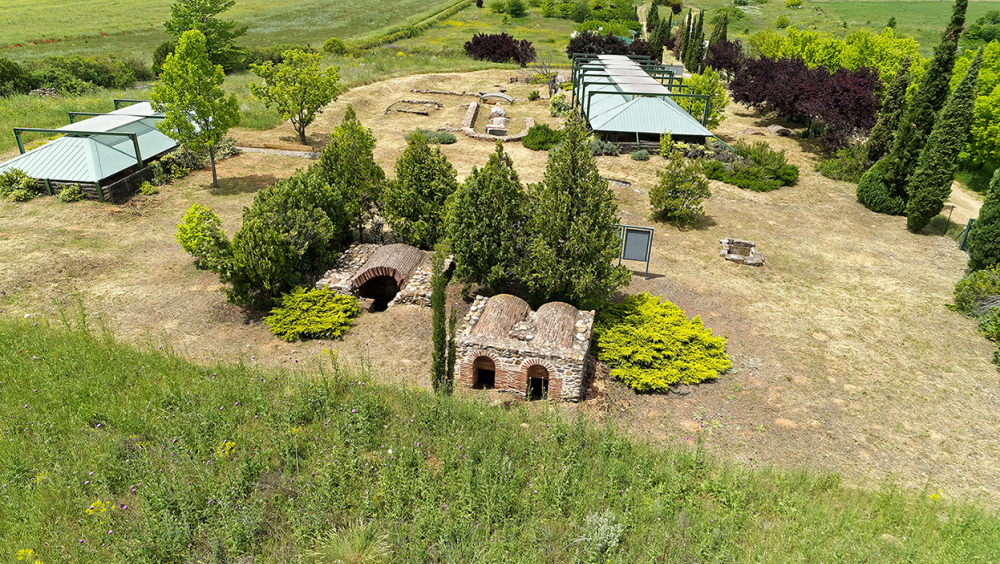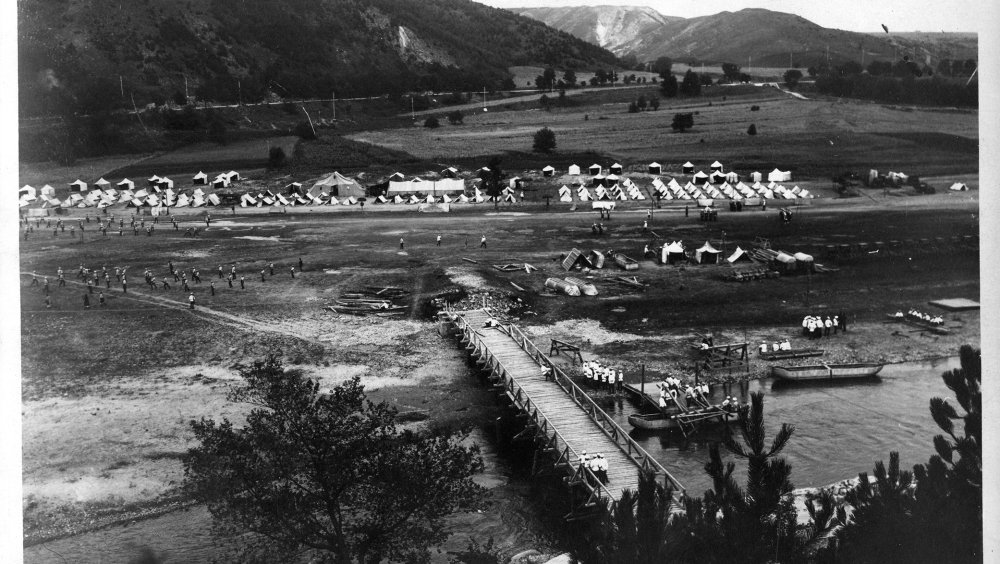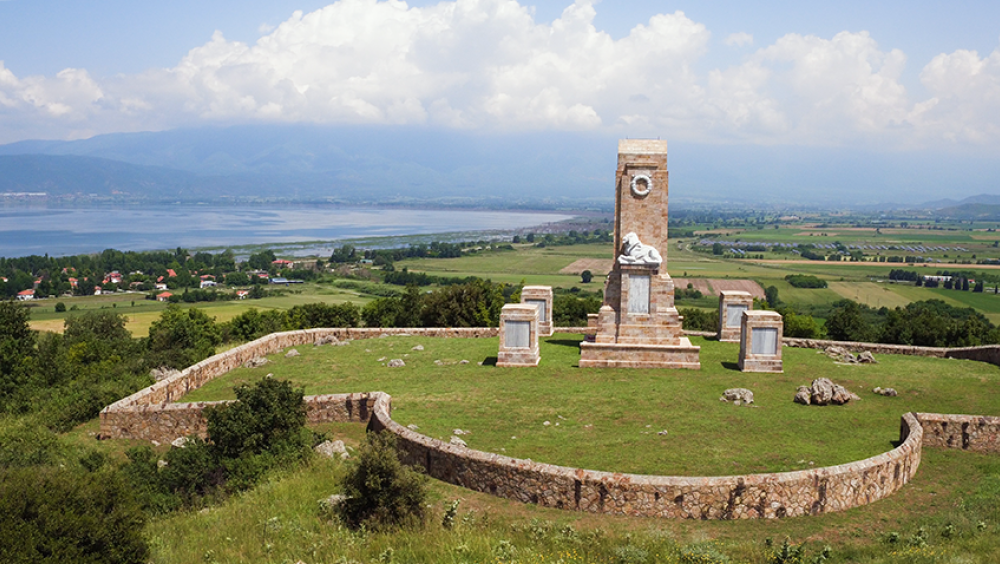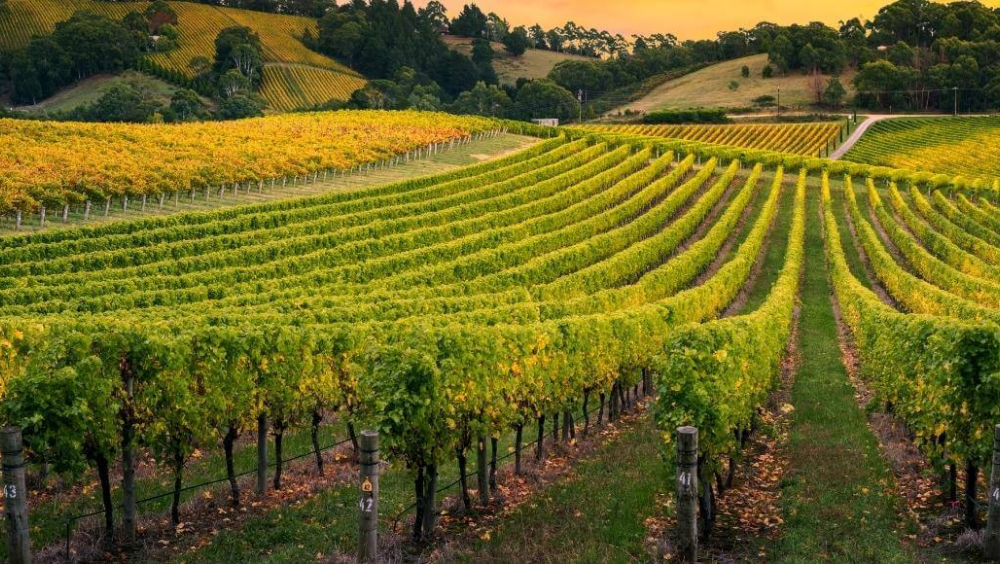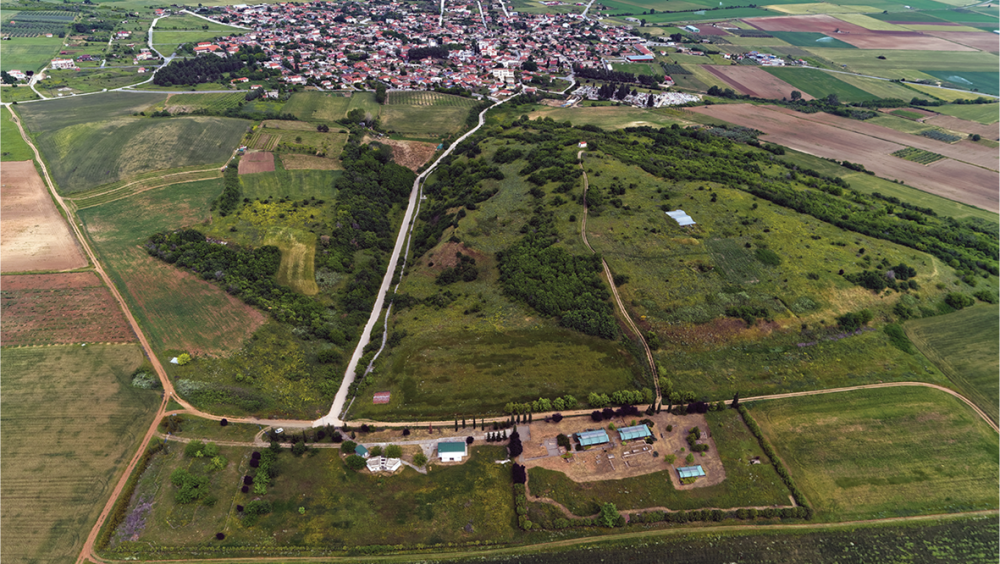The Delightful Region of Kilkis: Natural Routes, Cultural Connections and a Tale of the First European Citizenship
Very few people know where the Regional Unit of Kilkis is located. They equally ignore that its northernmost part comprises Greece’s gateway to continental Europe. Simultaneously, the region signifies one of Europe’s neuralgic exits to the Aegean Sea and the southeastern part of the Mediterranean, owing to a major natural route: the Axios River. Traversing parts of the Balkans as Vardar River, throughout the western Kilkis Region, in Greece, and flowing into the Gulf of Thessaloniki, this major trade route and hub of communication connects Greece and Europe, as early as Prehistory. Analogous to Europe’s major rivers, Axios allowed communities and individuals to establish and negotiate social and economic networks of communication, throughout the millennia. These were created a) via mechanisms of exchange and intense mobility of products, artifacts, and people; b) via dissemination of ideas, shared practices, traditions and common values. ‘Product’ of such favorable circumstances was the establishment of the ancient city of Europos = city of the first Europeans! Continuously inhabited from the Neolithic to the Ottoman periods, the archaeological site is located in close proximity to Axios, in a fertile valley cultivated with extensive vineyards, confirmed at least since the 19th century, and currently producing brand name wines. During the Great War (WW I), the area’s strategic importance transformed several of its sites into a theater of military operations between the years 1915-1918 (i.e. in Doiran, Skra, Polykastro, Kristoni) and into historical loci. The war-related activities left tangible traces in this serene landscape: cemeteries, memorials and cenotaphs, gun-emplacements, railway tracks and train stations, abandoned buildings, battle- and airfields; stories of individuals and communities, of regions and countries which choose connections over divisions, harmonious coexistence over conflict. All these ‘fragments’ constitute our common European Heritage which we owe to cherish, protect and promote.
Unlike the rest of Europe, Greece, coming out of turbulent times, i.e. during the Macedonian Fight (1904-1908), the Balkan Wars (1912-1913), the Greco-Turkish War/’Asia Minor Catastrophe’, (1919-1922), chose not to deal with its WW I traumas; it did not mourn its dead! In this remote part of the country, however, there were still people and communities that preserved memories and transmitted them to contemporary generations. These not only remember the dark shadows and war atrocities associated even with their own Allies, who had encamped across the border with Bulgaria and former Yugoslavia, but, also, around the Kilkis region. They sublimated their grief into productive activities, inventions, cultural practices and focused instead on the joys of life. Hence, they chose to remember those foreign army officers, whose high level of education and research involvement with Archaeology, back to their homeland, galvanized them to initiate the first archaeological excavations in the overlooked Kilkis Region after the end of the WW I. The first finds were discovered whilst they were digging for war trenches and machine-gun emplacements. Casson, Heurtley, Rey, Gardner were pioneer archaeologists who excavated and published important prehistoric sites, placing for the first time the Kilkis Region into the archaeological maps of Greece and Europe.
Local citizens and communities also chose to commemorate the French Division’s infrastructure projects in the area. The first railway lines and routes, i.e. the Decauville Railway System, b) the cobbled streets leading to Mt. Paikon, c) a power station to generate electricity using Goumenissa’s abundant watermills, d) the construction of a military hospital, e) the well-known Fountain in the town’s Central Square. Beside the technological expertise that French soldiers and army officers transmitted to the local inhabitants, they left their imprint on the region’s musical heritage, and, consequently, influenced local traditional musicians’ choices. Up to that point in time, zournades and pipes were the fundamental woodwind musical instruments of each traditional band in the famous “Musicians’ Neighborhood” of Goumenissa. According to oral testimonies, the philharmonic bands of the French Army made a great impression on the local wind luthiers and instrumentalists as the instruments shone in sunlight while the French were playing. As a result, the former decided to adopt brass instruments and integrate them into their groups along with large drums (daoulia). Since then, the renowed Chalkina of Goumenissa (Goumenissa’s Brass Instruments Bands) have taken a very special place in Greece’s traditional musical heritage which is preserved up to the present day.
Before leaving the Kilkis region, the Allied Army officers and soldiers made sure that they had refilled their canteens/flasks with Goumenissa’s renowned wine. The region’s cultivated vineyards were estimated to 1,100 hectares before the 1918-1919 phylloxera outbreak. As early as the 19th century, wine production in this area had not only been a household activity, but, rather a successful industry operating on a large scale. Since 1979, owing to targeted endeavors and research by the wine pioneer, Yannis Boutaris, and I. Vlachos, Professor of Agronomy/Agriculture, at the Aristotle University of Thessaloniki, the wines of Goumenissa belong to a Protected Designation of Origin zone (PDO). Due to this development, professional wine producers can now export their wines across Europe and the Globe having recognized their indigenous varieties, i.e. Xinomavro and Negoska. Thanks to European funds and the producers’ devotion and commitment to the ‘God of Wine’, the last few decades, successful family wineries, such as Boutaris, Chatzivaritis, Aidarinis, Titos-Gerovasileiou are able to trade and dynamically promote their wines around the World, thus, placing Goumenissa, and Greece as a whole, in the World Atlas of Wine, for the first time!
At the heart of this enchanting region, the ancient city of Europos (the City of Europeans = ΕΥΡΩΠΑΙΩΝ H ΠΟΛΙΣ, according to ancient inscriptions found at the site), to the west of the Kilkis Region, has been lying buried for centuries awaiting to be discovered. Fragmentary archaeological finds and small-scale excavation testify that this great city had continuously been inhabited from the Neolithic (5th millennium BC) to the Byzantine and Ottoman Periods. It was, however, during the Late Classical and Hellenistic times that the city reached its social and economic peak. Certain parameters justify and safeguard Europos’ significance, growth and development, then and now. First of all, its undisputed established brand name that evidently associates the ancient city with our Continent’s name; second, its strategic position, controlling the ‘entrance’ and all the routes from-and-to the Aegean and the Mediterranean Sea, the Balkan hinterland and continental Europe; third, its close proximity to Pella, the capital of the ancient Macedonian Kingdom; fourth, its privileged position, located on a fertile area with abundant natural resources; fifth, its Aristocracy and prominent, high-ranking citizens, such as Antiochos, father of Seleucus I Nicator, and, King Phillip’s II close confident and counsellor. Last but not least, the ancient city’s proximity to the Axios River, connecting Greece with the Balkans and continental Europe, establishing valuable natural routes for the long-distance circulation of goods, ideas and people.
Systematic enhancement, conservation, protection and promotion of the above-mentioned natural and cultural heritage sites and landmarks call for any kind of cross-border collaboration with neighboring countries, exchange of technological know-how among partners willing to take initiatives and to bring together communities, young people, schools, elderly and people with disabilities. Subsequently, acknowledgement of the value and role of Cultural and Natural Heritage raises public awareness and promotes Historical Tourism, essentially contributing to the establishment of long-term synergies, dissemination of knowledge and innovative expertise, growth and positive appreciation of our land and cultural reserve.
More importantly, the contemporary borders of Greece and Europe, through the Balkans, constitute politically complex but also entangled natural and cultural entities. Our proposed ‘Story of Europe’, reinforced with joined actions, cultural, educations activities, experiential and research workshops that can be organized during the European Heritage Days in September 2024 advocates for the idea that Cultural and Natural Heritage, our common European Heritage, can act as levers for growth and development in our region. This, in turn, strengthens not only the economic development of the involved communities / areas / states, but also, the commonality and harmonious coexistence of their inhabitants, in accordance with the principles of the Council of Europe and the European Commission.
